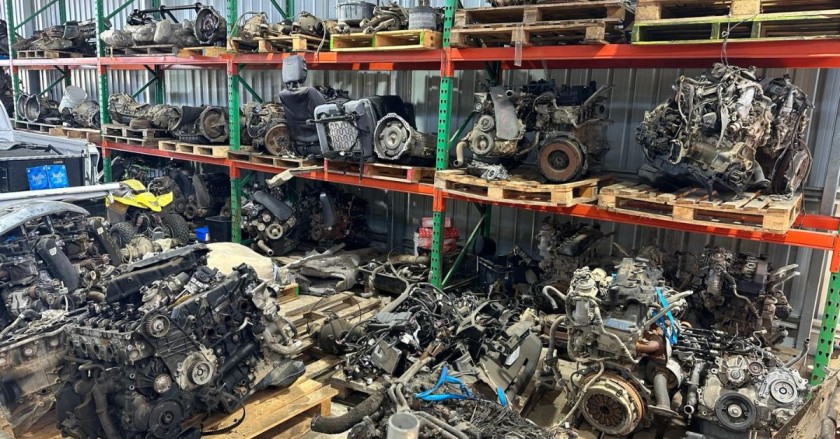Stainless steel is a cornerstone of modern industry, prized for its durability, corrosion resistance, and versatility. Among the many grades of stainless steel, 304 and 316 stand out as the most commonly used, particularly in applications ranging from kitchenware to marine equipment. For those involved in scrap metal recycling, understanding the differences between 304 and 316 stainless steel is crucial—not only for identifying the material but also for maximizing the value of scrap.
In this blog, we’ll dive deep into the comparison of 304 and 316 stainless steel, exploring their composition, properties, applications, and, most importantly, their scrap value. By the end, you’ll have a clear understanding of which grade typically commands a higher price in the stainless steel scrap market and why.
Understanding Stainless Steel Grades
Stainless steel is an alloy primarily composed of iron, with significant amounts of chromium and nickel, and sometimes other elements like molybdenum. These alloys are classified into grades based on their chemical composition and properties, with 304 and 316 belonging to the austenitic family, known for their non-magnetic nature, excellent formability, and corrosion resistance. The differences between these grades stem from their alloying elements, which directly influence their performance, cost, and scrap value.
Composition of 304 Stainless Steel
304 stainless steel, often referred to as “18/8” stainless steel, contains approximately:
- 18% Chromium: Provides corrosion resistance and a shiny appearance.
- 8% Nickel: Enhances formability and ductility.
- 0.08% Carbon (max): Contributes to strength but kept low to maintain weldability.
- Other elements like manganese, silicon, phosphorus, and sulfur in smaller amounts.
This composition makes 304 stainless steel a versatile, cost-effective option for a wide range of applications, from kitchen sinks to industrial equipment.
Composition of 316 Stainless Steel
316 stainless steel, sometimes called “marine grade” stainless, has a slightly different makeup:
- 16% Chromium: Slightly less than 304, but still provides excellent corrosion resistance.
- 10% Nickel: Higher than 304, improving corrosion resistance and strength.
- 2-3% Molybdenum: The key differentiator, enhancing resistance to chlorides and harsh chemicals.
- 0.08% Carbon (max): Similar to 304, ensuring good weldability.
The addition of molybdenum makes 316 particularly resistant to pitting and crevice corrosion in chloride-heavy environments, such as marine or chemical processing settings.
Properties and Applications
The compositional differences between 304 and 316 stainless steel lead to distinct properties, which in turn dictate their applications and influence their scrap value.
Properties of 304 Stainless Steel
- Corrosion Resistance: 304 offers excellent resistance to oxidation and most acids but is less effective in chloride-rich environments, where it may experience pitting corrosion.
- Strength and Formability: With a tensile strength of around 621 MPa (90 ksi), 304 is strong yet easy to form into sheets, plates, or tubes.
- Heat Resistance: Can withstand temperatures up to 870°C (1598°F) in intermittent service and 925°C (1697°F) in continuous service.
- Cost: Generally less expensive due to lower nickel content and absence of molybdenum.
Applications: 304 is the go-to choice for general-purpose applications, including:
- Kitchen appliances (sinks, refrigerators, cookware)
- Food processing equipment
- Architectural structures (handrails, panels)
- Automotive parts
- Medical equipment (non-implantable)
Properties of 316 Stainless Steel
- Corrosion Resistance: Superior to 304, especially in marine and chemical environments, due to molybdenum’s ability to resist chlorides and industrial solvents.
- Strength: Slightly higher tensile strength than 304, around 579 MPa (84 ksi), with improved resistance to pitting.
- Heat Resistance: Similar to 304, but slightly lower melting range (1371°C–1399°C or 2500°F–2550°F).
- Cost: Typically 20-40% more expensive than 304 due to higher nickel and molybdenum content.
Applications: 316 is preferred in harsher environments, such as:
- Marine equipment (boat fittings, underwater components)
- Chemical and pharmaceutical processing equipment
- Medical devices (surgical instruments, implants)
- Outdoor sinks and fixtures
- Coastal architectural applications
Scrap Value Comparison
When it comes to scrap metal recycling, the value of stainless steel depends on several factors, including its grade, market demand, purity, and the presence of valuable alloying elements like nickel and molybdenum. Let’s break down how 304 and 316 compare in the scrap market.
Market Prices for 304 and 316 Stainless Steel Scrap
As of recent data from 2019 to 2023, scrap prices for stainless steel fluctuate based on global metal markets, particularly the prices of nickel, chromium, and molybdenum. Here are some indicative prices from that period:
- 304 Stainless Steel Scrap: Typically valued at $0.20–$0.64 per pound, with an example price of $0.56 per pound in 2019.
- 316 Stainless Steel Scrap: Generally fetches a higher price, ranging from $0.50–$0.91 per pound, with an example price of $0.78 per pound in 2019.
These figures suggest that 316 stainless steel scrap consistently commands a premium, often 30-50% higher than 304, primarily due to its molybdenum content and higher nickel percentage, both of which are more expensive elements.
Why 316 Scrap Is More Valuable
- Molybdenum Content: Molybdenum is a relatively rare and costly alloying element, making 316 scrap more desirable for recyclers who can extract and reuse it in high-value applications.
- Higher Nickel Content: Nickel prices significantly influence stainless steel scrap value. With 10% nickel compared to 304’s 8%, 316 contains more of this valuable metal.
- Demand in Specialized Industries: 316’s superior corrosion resistance makes it sought after in industries like marine, chemical, and medical, increasing its demand in both new and recycled forms.
- Market Rarity: While 304 is the most common stainless steel grade, 316 is less prevalent, making its scrap rarer and more valuable in certain markets.
Factors Affecting Scrap Value
- Market Demand: High demand for stainless steel in industries like construction, automotive, or marine can drive up scrap prices. For instance, 316’s use in marine applications makes it particularly valuable in coastal regions.
- Purity and Cleanliness: Scrap must be free of contaminants like plastic or other metals to fetch top prices. Clean, sorted 316 scrap will always yield a higher return than mixed or contaminated material.
- Global Metal Prices: Fluctuations in nickel, chromium, and molybdenum prices directly impact scrap values. For example, a spike in molybdenum prices can significantly boost 316 scrap value.
- Recycling Efficiency: The energy and cost savings from recycling stainless steel (up to 70% less energy than producing new steel) make both grades valuable, but 316’s specialized properties give it an edge.
Identifying 304 vs. 316 Stainless Steel for Scrap
One challenge for scrappers is distinguishing between 304 and 316 stainless steel, as they often look identical to the naked eye. Here are some methods to identify them:
- Magnet Test: Both 304 and 316 are austenitic and generally non-magnetic, but cold working can make them slightly magnetic. This test is not definitive for distinguishing between the two.
- Chemical Testing: A molybdenum drop test or portable X-ray fluorescence (XRF) spectrometer can detect the 2-3% molybdenum in 316, which is absent in 304.
- Scrap Yard Analysis: Many scrap yards use metal analyzers to accurately identify grades, ensuring you get the correct price for 316.
- Markings: Some items are stamped with their grade (e.g., “316” or “304”), particularly in industrial or marine applications. Always check for these markings.
If you’re unsure, consult with a reputable scrap yard like Greener Recycling or RCM Recycling, which can analyze and sort your material to maximize value.
Practical Tips for Scrappers
To get the best value for your 304 or 316 stainless steel scrap, consider these tips:
- Sort Your Scrap: Separate 304 and 316 to avoid being paid the lower 304 price for mixed material. Use a metal analyzer if possible.
- Clean Your Scrap: Remove any non-metal attachments (plastic, rubber, etc.) to increase the scrap’s purity and value.
- Shop Around: Prices vary between scrap yards. Call multiple yards to compare offers, as some may pay a premium for 316.
- Monitor Market Trends: Stay informed about nickel and molybdenum prices, as these directly affect scrap values. Websites like Metal Supermarkets or industry reports can provide updates.
- Target High-Value Sources: Look for 316 in marine equipment, chemical processing plants, or medical facilities, and 304 in household appliances or construction sites.
Environmental and Economic Benefits of Recycling
Recycling both 304 and 316 stainless steel offers significant benefits:
- Environmental Impact: Recycling reduces the need for mining new ores and saves up to 70% of the energy required to produce new stainless steel.
- Economic Savings: Using recycled stainless steel lowers production costs for manufacturers, which can stabilize prices for consumers.
- Sustainability: Both grades are fully recyclable, supporting a circular economy and reducing environmental footprints.
Conclusion: Which Scrap Has Higher Value?
In the scrap metal market, 316 stainless steel generally has a higher value than 304 due to its molybdenum content, higher nickel percentage, and demand in specialized industries like marine and chemical processing. While 304 is more common and widely recycled, its lower cost and lack of molybdenum make it less valuable per pound. However, the exact price difference depends on market conditions, scrap purity, and regional demand.
For scrappers, the key to maximizing value lies in accurate identification, proper sorting, and choosing the right scrap yard. By understanding the differences between 304 and 316 stainless steel, you can make informed decisions to get the best return on your scrap. Whether you’re dealing with kitchenware or marine fittings, knowing your material’s grade can turn your scrap into a valuable resource.
For the latest scrap prices or to verify your stainless steel grade, contact a trusted recycler like A1 Metal Recycle, and always keep an eye on market trends to time your sales for maximum profit.



